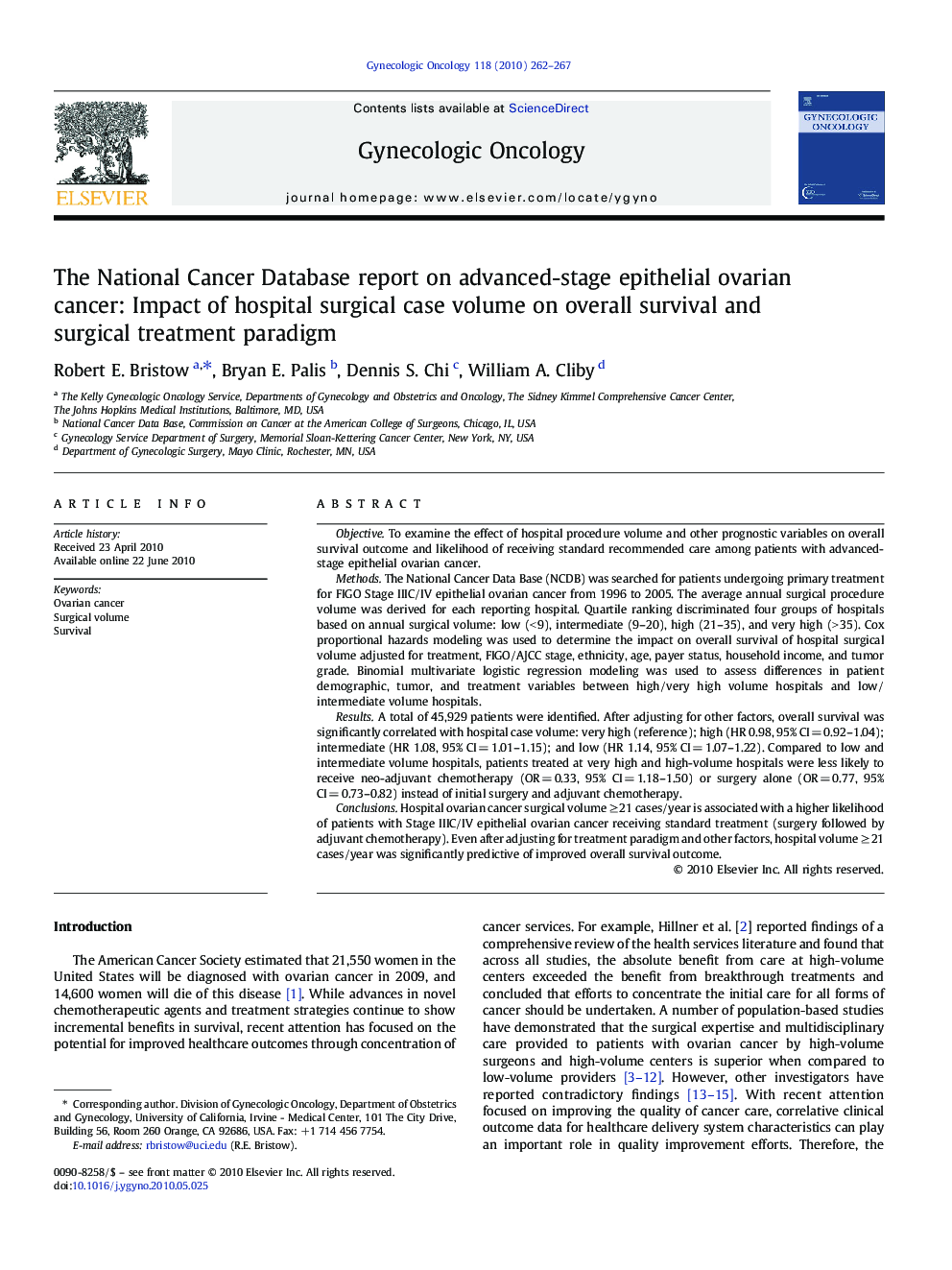| Article ID | Journal | Published Year | Pages | File Type |
|---|---|---|---|---|
| 3945606 | Gynecologic Oncology | 2010 | 6 Pages |
ObjectiveTo examine the effect of hospital procedure volume and other prognostic variables on overall survival outcome and likelihood of receiving standard recommended care among patients with advanced-stage epithelial ovarian cancer.MethodsThe National Cancer Data Base (NCDB) was searched for patients undergoing primary treatment for FIGO Stage IIIC/IV epithelial ovarian cancer from 1996 to 2005. The average annual surgical procedure volume was derived for each reporting hospital. Quartile ranking discriminated four groups of hospitals based on annual surgical volume: low (< 9), intermediate (9–20), high (21–35), and very high (> 35). Cox proportional hazards modeling was used to determine the impact on overall survival of hospital surgical volume adjusted for treatment, FIGO/AJCC stage, ethnicity, age, payer status, household income, and tumor grade. Binomial multivariate logistic regression modeling was used to assess differences in patient demographic, tumor, and treatment variables between high/very high volume hospitals and low/intermediate volume hospitals.ResultsA total of 45,929 patients were identified. After adjusting for other factors, overall survival was significantly correlated with hospital case volume: very high (reference); high (HR 0.98, 95% CI = 0.92–1.04); intermediate (HR 1.08, 95% CI = 1.01–1.15); and low (HR 1.14, 95% CI = 1.07–1.22). Compared to low and intermediate volume hospitals, patients treated at very high and high-volume hospitals were less likely to receive neo-adjuvant chemotherapy (OR = 0.33, 95% CI = 1.18–1.50) or surgery alone (OR = 0.77, 95% CI = 0.73–0.82) instead of initial surgery and adjuvant chemotherapy.ConclusionsHospital ovarian cancer surgical volume ≥ 21 cases/year is associated with a higher likelihood of patients with Stage IIIC/IV epithelial ovarian cancer receiving standard treatment (surgery followed by adjuvant chemotherapy). Even after adjusting for treatment paradigm and other factors, hospital volume ≥ 21 cases/year was significantly predictive of improved overall survival outcome.
